In the second of our three-part series on the Teagasc BETTER crop programme, we visit Cappoquin Estate in Co Waterford. The estate consists of a commercial orchard, 250-cow dairy farm and 233ha of tillage.
John Collins manages the tillage enterprise on the estate and has a long history of using precision agriculture technology on the farm.
Most of the land he manages is owned by the estate and is largely concentrated in four blocks. Soil type ranges from medium to heavy and crops grown on the farm consist of winter wheat, winter barley, winter oilseed rape, spring oats for porridge and forage maize.
While traditionally a plough-based system, 80% of winter crops were min-tilled last year. He replaced his old Moore uni-drill with a new Vaderstad Rapid drill.
While favourable weather allowed him to do this, the real deciding factor to move to minimum tillage was that this is more efficient on labour. Difficulty in acquiring skilled labour was a common theme across all three BETTER crop farms.
John won’t give up the plough for good though, as he still needs it when incorporating organic manures.
John consistently achieves above the national average in winter wheat yields, partly down to his meticulous attention to detail.
As well as being an early adopter of farm precision technology, he also places a big emphasis on identifying variations in fields and taking measures to correct this. This, according to Teagasc, was one of the key reasons he was chosen for the programme.

Like many areas, winter crops in Waterford are in excellent condition this year.
Programme perceptions
John was asked to join in 2015 after being approached by then crops specialist Michael Hennessey.
At that stage, John had been using various forms of precision technology. For example, he had yield maps dating back 20 years, variable rate capabilities on his spreader, nitrogen-sensing technology and much more.
John thought that entering the programme would help him make better use of the data when pulling it all together, particularly in nutrient management planning. At the time, securing farm labour was also proving an issue and he was looking for strategies help deal with this.
Early adaptor of precision ag
John has been using precision agriculture technology on the estate for over 20 years. Throughout the years he has been an early adopter of many technologies.
1996: He invested in his first yield monitoring equipment, the LH Agro 95 system, which connected to a Trimble 250 receiver. The system contained a 1MB memory card, which could hold one day’s worth of field data. He then used LH Agro software to generate the map. “You just got a print-out of the yield map, it was very basic,” he says. 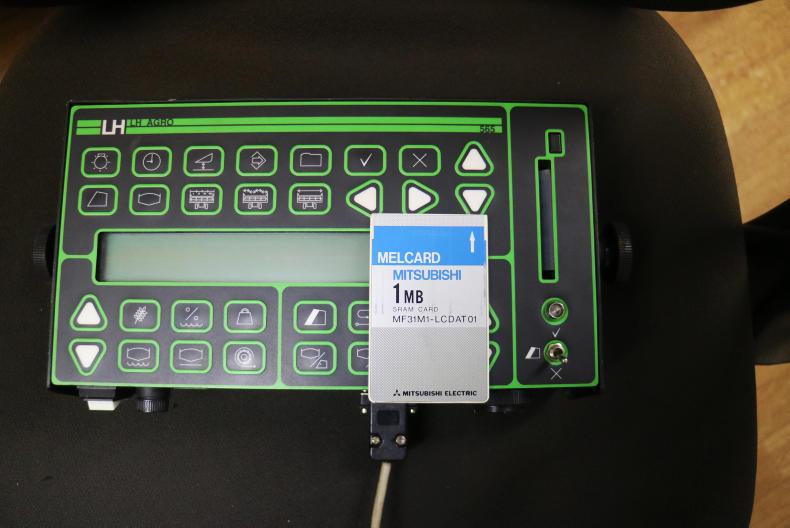
The LH Agro 95 system could store one day's worth of data.
1997: He began using the farm management software Farmplan (now known as Gatekeeper). By using this program, he could better interpret his yield maps. 1998: He bought his first GPS light bar guidance system. The RDS Marker LT system was first used to improve accuracy when spreading fertiliser. 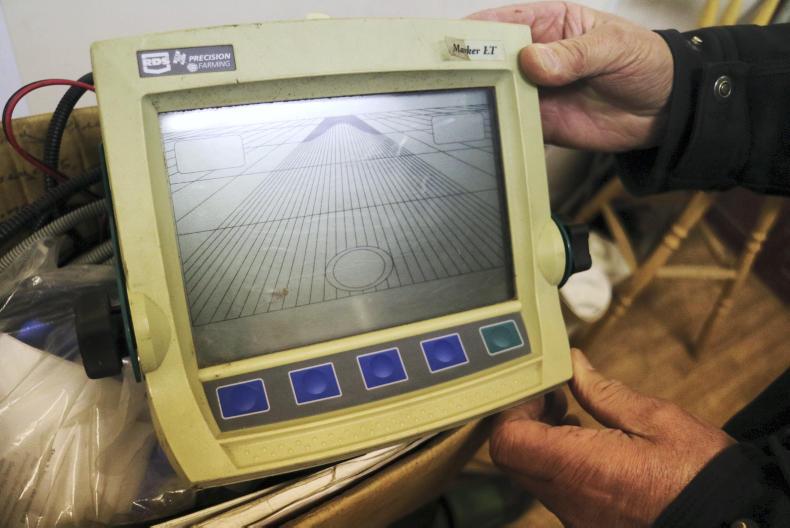
John first used a GPS light bar guidance system.
2008: Invested in an Amazon ZGB Ultra, capable of variable rate spreading. Using Gatekeeper, he was able to overlay the yield maps to generate variable rate prescriptions. 2011: Invested in a Yara N sensor, which was the first in Ireland. He thought that N-sensing technology could help him account for the variability of organic manures when spreading chemical N. The cab-mounted sensor scans the crop canopy and measures the crop’s light reflectance at specific wave bands related to the crop’s chlorophyll content and biomass. This measurement is then fed back to the Yara N controller, which adjusts the application rate of chemical N on his fertiliser spreader accordingly. “The N sensor has helped me make better use of expensive products,” he says. 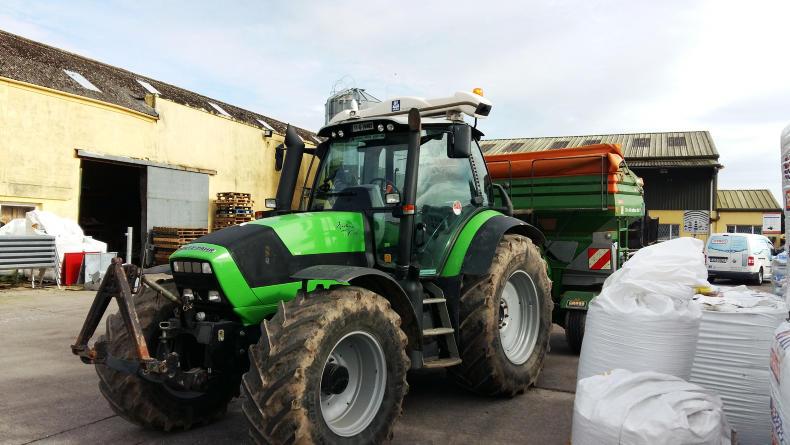
The Yara N sensor placed on top of the tractor cab.
2018: He upgraded to a new Amazone UX 3200 sprayer with 28m Profi-fold booms. The sprayer is equipped with auto section control. He uses the Teejet matrix pro 840GS receiver, which is connected to his Amatron 3 box. The receiver connects to 10 to 12 satellites and provides accuracy levels of up to 20cm. 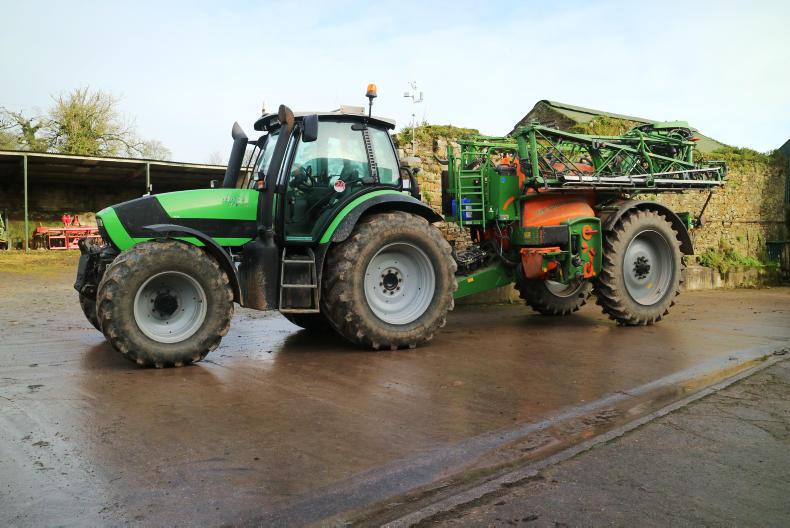
The new Amazone UX3200 sprayer.
When you start investing in precision technology, you need to think carefully John says. Each purchase should be able to complement each other and lead to a final solution, he remarks.
For example, when he purchased a variable rate spreader, he knew that it would be compatible with the N sensor. He knew that he would most likely purchase the N sensor later down the line.
“While there can be a big expense in purchasing the machine, the return is quite good when it’s done right,” he says.
Four years in the programme
One of the key aims of the programme was to identify variability within fields, identifying their causes and devising solutions to address this. In many cases, the solutions would involve more targeted nutrient use, which may be achieved through precision technology. Some of the key activities carried out by Teagasc on the farm during the programme were:
2015: In year one of the programme, Teagasc did intensive soil sampling (around one sample per acre) in one field which was identified as having variation in crop performance. The field was zoned and plant counts were carried out. Worm counts were also done in these zones. 2016: Soil sample maps were generated and sample results from the first year were presented at the first farm walk. Plant counts were repeated again this year. 2017: This year, they focussed on the headlands and conducted a visual evaluation of soil structure, dug test pits and took worm counts. This was to help identify the variation within the fields. They also took more plant counts to see if their readings correlated with his yield maps. There was another farm walk held this year. 2018: There was much more focus placed on nutrient management planning this year. They also measured his tramlines that year to test for accuracy. He was accurate down to 2cm. Programme outcomes
While there was variation evident on the farm, this was generally small. This helped to prove that John was on the right track and the measures he was adopting to manage variability were working. “They gave me validation that we were on the right track,” he says.
But regular interaction with Teagasc also helped him fine-tune his technology and learn to make better use of it.
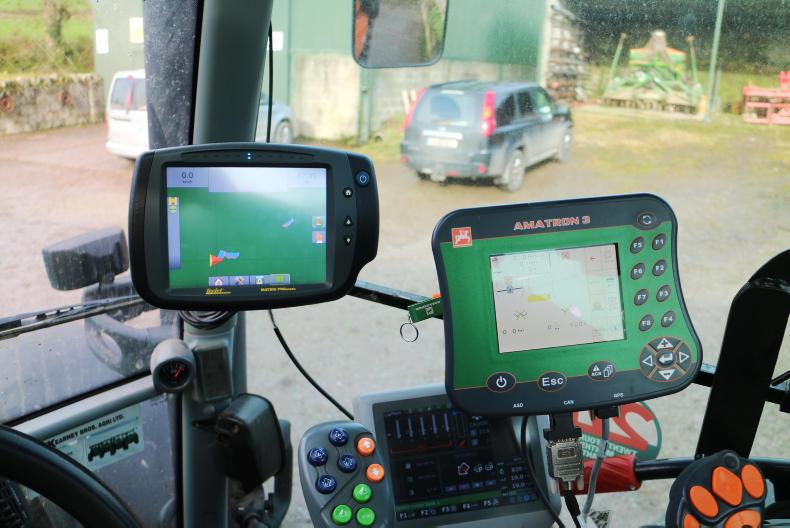
John's Teejet Matrix Pro 840GS receiver and Amatron 3 box.
“With regular conversations with Teagasc, they helped pull everything together and focus it,” John remarks. He also says his nutrient management planning is much more streamlined.
For a number for years, winter barley wasn’t preforming well on his farm.
Through talking with his adviser Eamon Lynch during the programme and through having detailed yield and soil fertility records, they were able to identify the reasons for this.
He has now switched to hybrid varieties, which are much more successful for him.
Future outlook
John sees precision technology and farm data as being crucial to deal with future environmental challenges and labour issues facing the sector.
He intends on looking into variable rate sowing, RTK auto-steer and a new fertiliser spreader in the near future. He will also continue to maintain detailed farm records.
Read more
BETTER crops update: Precision farming doesn’t necessarily mean tech
Precision applications of inputs on BETTER Farms
In the second of our three-part series on the Teagasc BETTER crop programme, we visit Cappoquin Estate in Co Waterford. The estate consists of a commercial orchard, 250-cow dairy farm and 233ha of tillage.
John Collins manages the tillage enterprise on the estate and has a long history of using precision agriculture technology on the farm.
Most of the land he manages is owned by the estate and is largely concentrated in four blocks. Soil type ranges from medium to heavy and crops grown on the farm consist of winter wheat, winter barley, winter oilseed rape, spring oats for porridge and forage maize.
While traditionally a plough-based system, 80% of winter crops were min-tilled last year. He replaced his old Moore uni-drill with a new Vaderstad Rapid drill.
While favourable weather allowed him to do this, the real deciding factor to move to minimum tillage was that this is more efficient on labour. Difficulty in acquiring skilled labour was a common theme across all three BETTER crop farms.
John won’t give up the plough for good though, as he still needs it when incorporating organic manures.
John consistently achieves above the national average in winter wheat yields, partly down to his meticulous attention to detail.
As well as being an early adopter of farm precision technology, he also places a big emphasis on identifying variations in fields and taking measures to correct this. This, according to Teagasc, was one of the key reasons he was chosen for the programme.

Like many areas, winter crops in Waterford are in excellent condition this year.
Programme perceptions
John was asked to join in 2015 after being approached by then crops specialist Michael Hennessey.
At that stage, John had been using various forms of precision technology. For example, he had yield maps dating back 20 years, variable rate capabilities on his spreader, nitrogen-sensing technology and much more.
John thought that entering the programme would help him make better use of the data when pulling it all together, particularly in nutrient management planning. At the time, securing farm labour was also proving an issue and he was looking for strategies help deal with this.
Early adaptor of precision ag
John has been using precision agriculture technology on the estate for over 20 years. Throughout the years he has been an early adopter of many technologies.
1996: He invested in his first yield monitoring equipment, the LH Agro 95 system, which connected to a Trimble 250 receiver. The system contained a 1MB memory card, which could hold one day’s worth of field data. He then used LH Agro software to generate the map. “You just got a print-out of the yield map, it was very basic,” he says. 
The LH Agro 95 system could store one day's worth of data.
1997: He began using the farm management software Farmplan (now known as Gatekeeper). By using this program, he could better interpret his yield maps. 1998: He bought his first GPS light bar guidance system. The RDS Marker LT system was first used to improve accuracy when spreading fertiliser. 
John first used a GPS light bar guidance system.
2008: Invested in an Amazon ZGB Ultra, capable of variable rate spreading. Using Gatekeeper, he was able to overlay the yield maps to generate variable rate prescriptions. 2011: Invested in a Yara N sensor, which was the first in Ireland. He thought that N-sensing technology could help him account for the variability of organic manures when spreading chemical N. The cab-mounted sensor scans the crop canopy and measures the crop’s light reflectance at specific wave bands related to the crop’s chlorophyll content and biomass. This measurement is then fed back to the Yara N controller, which adjusts the application rate of chemical N on his fertiliser spreader accordingly. “The N sensor has helped me make better use of expensive products,” he says. 
The Yara N sensor placed on top of the tractor cab.
2018: He upgraded to a new Amazone UX 3200 sprayer with 28m Profi-fold booms. The sprayer is equipped with auto section control. He uses the Teejet matrix pro 840GS receiver, which is connected to his Amatron 3 box. The receiver connects to 10 to 12 satellites and provides accuracy levels of up to 20cm. 
The new Amazone UX3200 sprayer.
When you start investing in precision technology, you need to think carefully John says. Each purchase should be able to complement each other and lead to a final solution, he remarks.
For example, when he purchased a variable rate spreader, he knew that it would be compatible with the N sensor. He knew that he would most likely purchase the N sensor later down the line.
“While there can be a big expense in purchasing the machine, the return is quite good when it’s done right,” he says.
Four years in the programme
One of the key aims of the programme was to identify variability within fields, identifying their causes and devising solutions to address this. In many cases, the solutions would involve more targeted nutrient use, which may be achieved through precision technology. Some of the key activities carried out by Teagasc on the farm during the programme were:
2015: In year one of the programme, Teagasc did intensive soil sampling (around one sample per acre) in one field which was identified as having variation in crop performance. The field was zoned and plant counts were carried out. Worm counts were also done in these zones. 2016: Soil sample maps were generated and sample results from the first year were presented at the first farm walk. Plant counts were repeated again this year. 2017: This year, they focussed on the headlands and conducted a visual evaluation of soil structure, dug test pits and took worm counts. This was to help identify the variation within the fields. They also took more plant counts to see if their readings correlated with his yield maps. There was another farm walk held this year. 2018: There was much more focus placed on nutrient management planning this year. They also measured his tramlines that year to test for accuracy. He was accurate down to 2cm. Programme outcomes
While there was variation evident on the farm, this was generally small. This helped to prove that John was on the right track and the measures he was adopting to manage variability were working. “They gave me validation that we were on the right track,” he says.
But regular interaction with Teagasc also helped him fine-tune his technology and learn to make better use of it.

John's Teejet Matrix Pro 840GS receiver and Amatron 3 box.
“With regular conversations with Teagasc, they helped pull everything together and focus it,” John remarks. He also says his nutrient management planning is much more streamlined.
For a number for years, winter barley wasn’t preforming well on his farm.
Through talking with his adviser Eamon Lynch during the programme and through having detailed yield and soil fertility records, they were able to identify the reasons for this.
He has now switched to hybrid varieties, which are much more successful for him.
Future outlook
John sees precision technology and farm data as being crucial to deal with future environmental challenges and labour issues facing the sector.
He intends on looking into variable rate sowing, RTK auto-steer and a new fertiliser spreader in the near future. He will also continue to maintain detailed farm records.
Read more
BETTER crops update: Precision farming doesn’t necessarily mean tech
Precision applications of inputs on BETTER Farms












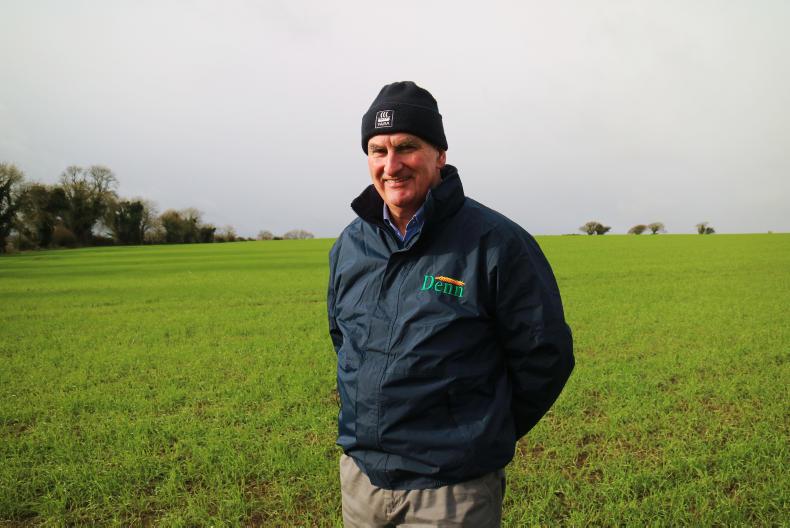
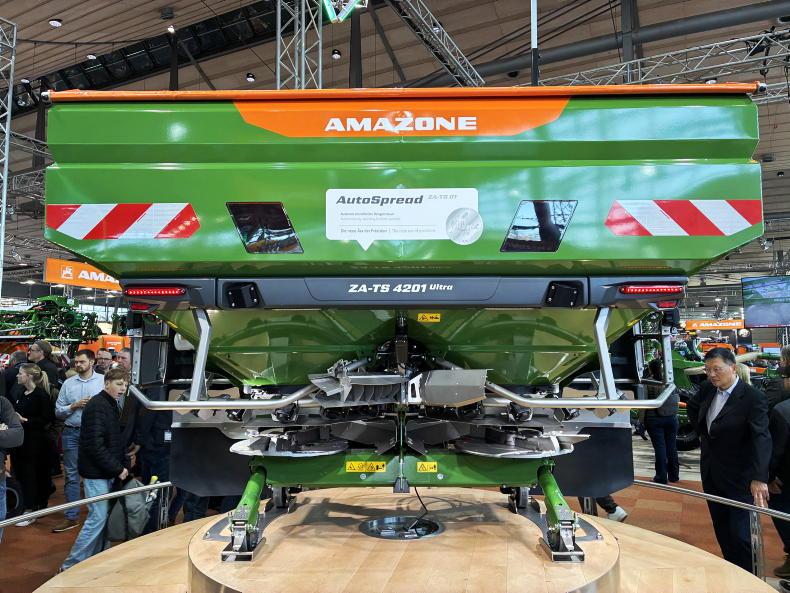

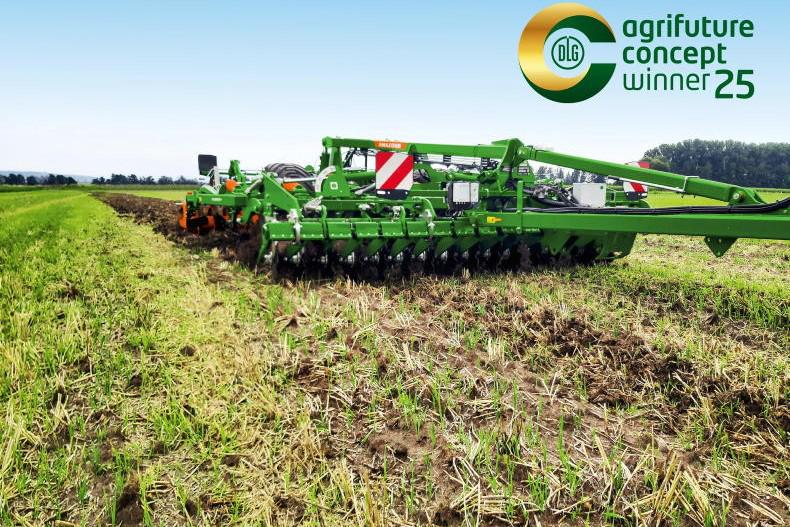
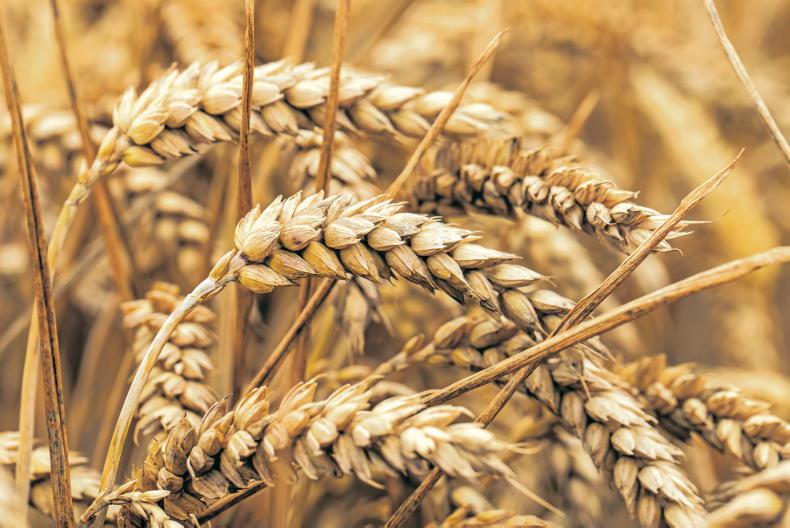

SHARING OPTIONS